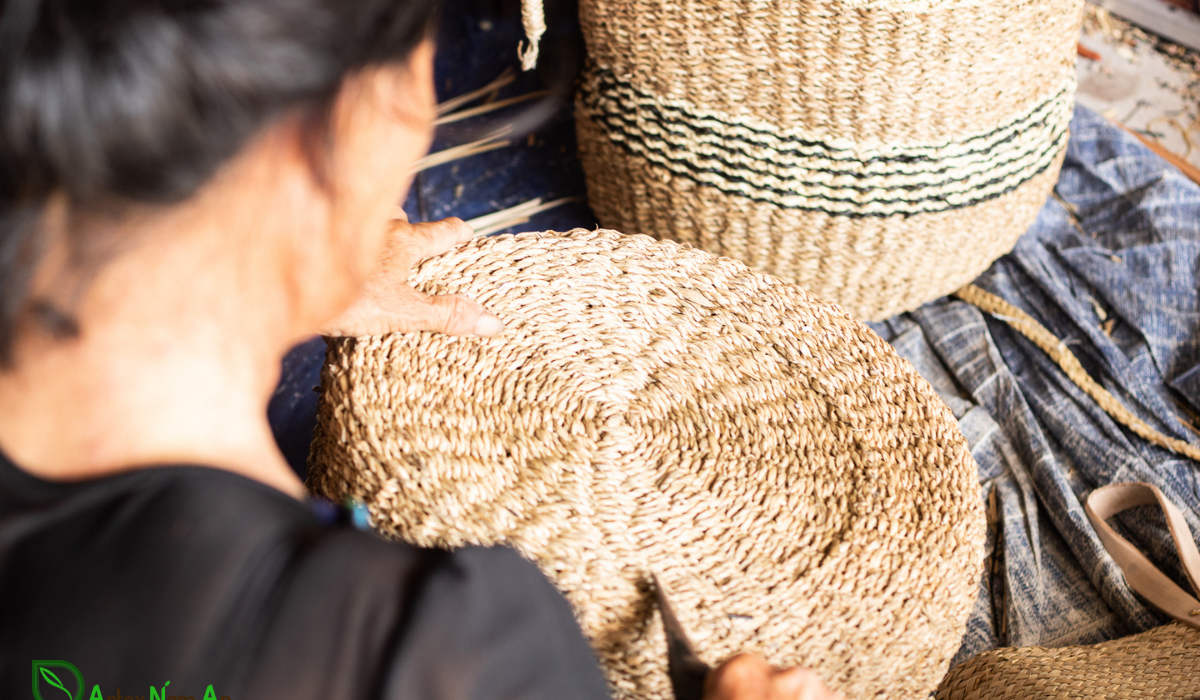As regarding to wicker homewares, seagrass material would be unmissable. Thanks to its physical properties and aesthetics, seagrass products are . Our article will provide answers to “Why are seagrasses preferred for housewares?” and “How long does it take to produce seagrass material products?”
Why is seagrass material preferred for housewares?
Seagrass (or sedge) grows well in South-East Asian coastal areas. In Vietnam, we mainly use cultivated seagrass from field areas which have previously been flooded by the sea. Seagrass is renowned for its great flexibility and durability. Well-dried seagrass looks smooth and has a light brown color with a greenish tint.

This fiber is the best material for making sleeping mats, bags, storage baskets, planters, trays, and seagrass home decor. Both seagrass and water hyacinth are flexible, but their looks are quite different: Seagrass is thin, smooth with light brown color while Water-Hyacinth is more spongy, porous with warm yellow brown.
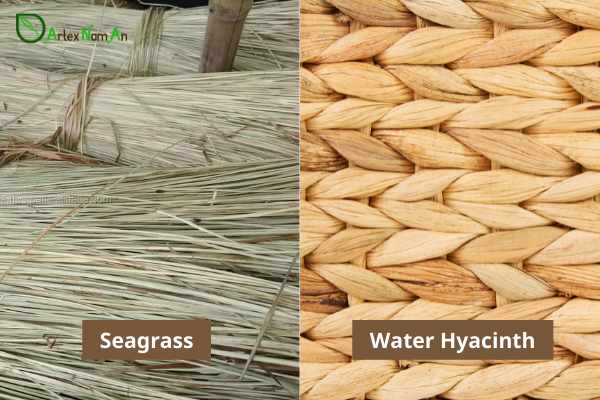
>> READ MORE: 6 Popular Seagrass Weaving Styles For Wholesale Storage Baskets
Key things about the production process with seagrass material
The process from sourcing seagrass material to finishing home products is long, complicated and labor-intensive. It involves small/medium-scale growers, collectors and producing companies. Here, we highlight key points that you should know about the production process of seagrass homewares.
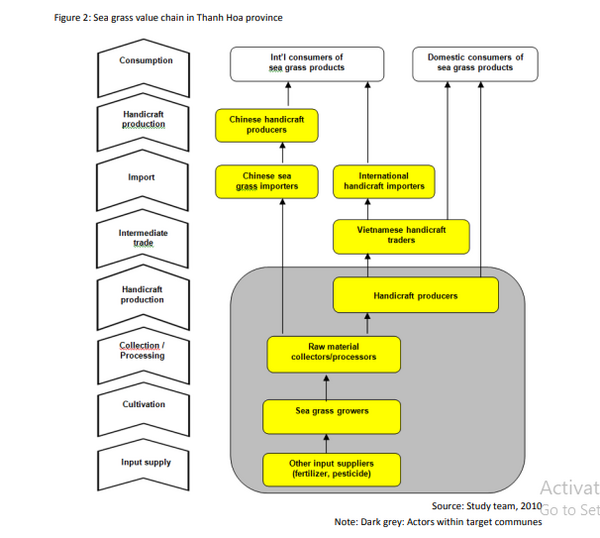
Seagrass material is sourced from growers or collectors
Unlike plastics or automotive manufacturing, the production of seagrass homewares generally doesn’t operate in assembly lines. Seagrass is sourced from some specific areas, then collected, processed and sold to handicraft producing companies.
Phase 1: Harvest & Drying (Growers)
Seagrass is grown by farm households, mostly in the Northern & Central provinces of Vietnam (i.e. Thanh Hoa, Ninh Binh, Thai Binh). The quality of seagrass differs from province to province, even for the same species. Thanh Hoa is the major production area with the best quality seagrass — often distributed to Kim Son, Ninh Binh for producing handicrafts.

Seagrass harvesting requires hard work. Once harvested, split and sorted, seagrass is exposed to sunlight for 3-4 days. Well-dried seagrass strands are durable, soft, smooth with natural beautiful color. Without enough natural drying, seagrass will rot and its color darkens, which cannot be used for handicraft production.
Phase 2: Collecting & Processing (Collectors)
Dried seagrass are then sold to collectors/processors. They store this material and often use sulfur to prevent molding for a certain time, before selling seagrass to handicraft producers. Aside from split seagrass strands, collectors also sell semi-processed ropes (multiple strands twisted or braided).

Seagrass material products are mainly made at farm household level
Weavers actually have two choices of working with handicraft producing companies. They can work as either employees (present at the factory), or sub-contractors. If weavers are sub-contractors, they will be provided with materials by the handicraft producing company and make products at home.

A large part of handicraft products are made at farm household level. Once sub-contractors complete weaving, handicraft producing companies will collect raw products and do quality checking, finishing afterwards.
Before the weaving stage, handicraft producing companies need to source materials from seagrass collectors/growers and sub-suppliers. Therefore, the lead time is quite long (40-70 days), and even one month longer if you place orders near Lunar New Year.
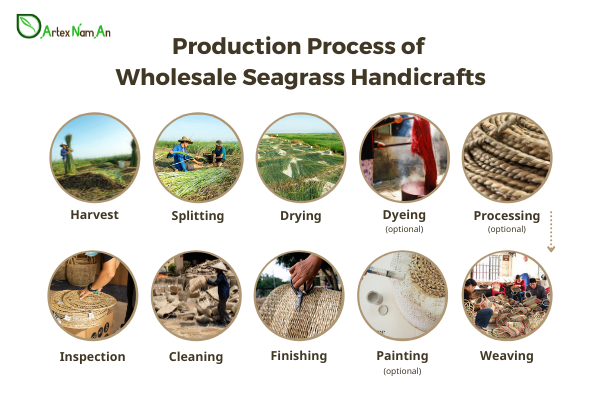
Products hand-made from seagrass material vary slightly in size, shape and color. About coloring, seagrass material can be either dyed or painted.
- Dyeing: Seagrass need to be dyed first before the weaving stage, but it is suitable for dyeing with dark colors, and the colors can fade over time.
- Painting: Paint will be applied on seagrass products after they are woven. Seagrass can be painted with various colors; however, painting on seagrass can peel off quite easily.
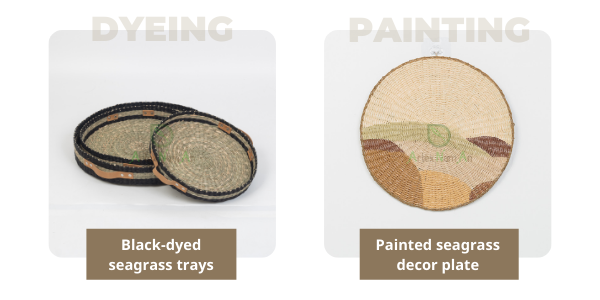
Products made from seagrass material need careful finishing and inspection.
Finishing is a crucial step in making handicrafts in general and seagrass products in particular. It consists of trimming, cleaning, gluing (to make products well-shaped and mold-free) and shaping.
For exportation, the acceptable moisture content of seagrass products is 18-22%. Seagrass products need to avoid defects such as stain marks, uncut weaving, peeled paint, deformed, broken weaving and poor weaving.
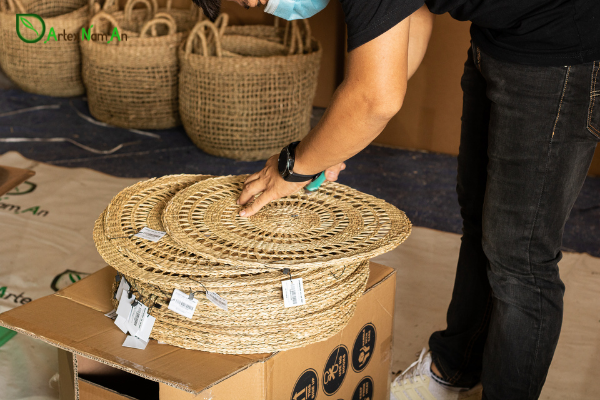
For specific markets such as the USA, Australia, and some European countries, fumigation is required for seagrass products with the aim of removing pests which may appear in transit.
Hope this article helps you know about the handicraft production process in Vietnam. It would be useful when you start to source seagrass products from Vietnam and communicate better with wholesale home decor suppliers.
>> READ MORE: 3 Things You Should Know Before Buying Wholesale Seagrass Baskets


